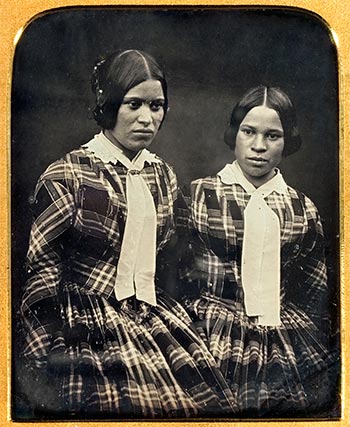Story summary
Early photography, 1840 to 1880s
Photography arrived in New Zealand soon after the first European settlers. The first known attempt to make a daguerreotype (a photograph made on a silver or silver-coated plate) in New Zealand was in 1848. Early photographers showed settlers transforming forests into farms, towns and cities. They also photographed scenery.
In the 1860s cartes de visite – small, inexpensive photos mounted on card – were popular. Many studios were set up, and ordinary people had their portraits taken. Pākehā posed for photos in their best clothes, while Māori were often shown in traditional garments. Portraits quickly became important to Māori, and many meeting houses feature walls covered in photographs.
Expansion of photography, 1880s to 1960s
In the 1880s film became more sensitive, allowing shorter exposure times, and the Kodak was invented, allowing non-professionals to take photos. People began to see photography as ‘capturing moments’. Camera clubs and photographic societies were set up around the country. Soldiers took cameras to the First World War.
Some photographers produced work that raised awareness of social issues. They included John Pascoe in the 1940s and Ans Westra from the 1960s. Commercial studios produced scenic panoramas, wedding photos and photos for advertising.
New Zealand photojournalist Brian Brake became internationally famous. Photography was not yet accepted in the art world.
New directions, 1970s to 2000s
In the later 20th century photography became accepted as an art form. PhotoForum was set up in 1974 to promote photography. University courses began and art galleries collected photos. The Manawatu Art Gallery’s 1975 exhibition The Active Eye focused on photography as art.
Documentary photography recorded the protest movements of the 1980s. Photography became broader, including more colour, personal views and an interest in history. Postmodern photography focused on creating images rather than recording reality.
Digital cameras became available in the early 1990s, and soon replaced film cameras. By 2013 most cellphones included cameras, allowing anyone to be a photographer and record important events.





